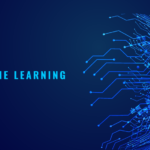With the rate of technological advancements happening in today’s world, undeniably it is becoming more challenging to foresee the state of technology in the next 5 -10 years. Also, it will be even more challenging for businesses to adapt to these digital transformations. When we look back at the beginning of the past decade 2010, it is evident that 2010s drove digital transformation across businesses to a greater extent. The past decade has been dubbed as the Fourth Industrial Revolution or Industry 4.0. We are fortunate to have witnessed the birth of new digital and physical technologies with almost infinite applicability – and tremendous implications for the economy and civilization.
Entering 2020 will mark a significant shift in the tech world. Initially, Digital technology started to have a significant impact on businesses around 2010, meaning next year will mark a new milestone – a decade of transformation. Digital transformation is no more complementary to well-established models but as a potential replacement of their core businesses.
But with 2020 already here, IT leaders are making big bets on technologies like artificial intelligence, IoT, data analytics and AR/VR, and bolstering cybersecurity, to prepare their organizations for whatever the future may hold.
IoT – The Hype is Real
According to Business Insider, the total investment that companies would make in the IoT market by 2025 would be $15 trillion.
The Internet of Things (IoT) is a relatively new technology but has been discussed for a very long time. There’s definitely a lot of hype around it, and both businesses and consumers are starting to realize its opportunities.
The buyer/consumer is no longer the end-user, but rather the systems integrator who specializes in a specific industry domain. As the IT industry is ever-growing, which is giving us all this hardware, all these operating systems, and development frameworks. This creates a new challenge for the coming years to bring all of this together to create new and valuable vertical solutions and taking these solutions to market swiftly and risk-free. Solving this challenge helps to accelerate complex tasks and cut costs, streamline operations and open up new lucrative revenue streams.

Illustration 1 shows that from 2015 to 2019 the rise of IoT has been gradual but the real rise is set to happen from 2019 to 2025 with the number of devices doubling.
The advantages of growing businesses include everything from remote monitoring and inventory management to improve mobility, security, and overall operational efficiency. Traditionally the challenge has been to face incompatibility and seamless connectivity, but new advanced tech integration services will be the binding factor that will help move businesses forward.

Illustration 2 – Collected from the International Data Corporation (IDC). Manufacturing operations sector is the highest spending sector in IoT with 100 Billion dollars already invested. Interestingly, the sector that is being showcased as a flagship of IoT use case – “Smart Home” is less than half of what the manufacturing operations industry invests at 44.1 Billion dollars.
Marketing and Sales Automation
Marketing automation has become a core digital strategy that today it’s almost impossible not to do any marketing automation if you run any kind of business. Marketing Automation tools are so important that it’s even harder not to use at least a couple of marketing automation tools.
This decade started a trend in marketing personalization. There are tools that segment your customers and reduce the efforts involved in crafting a personalized experience without the need to focus on individual customers. This allows you to create and automatically distribute messages that work with the unique requirements of each customer based on their behavior. Increased targeted messaging means an enhanced possibility of conversion, whether it’s a new lead or a long-time buyer.
There are many use cases for marketing automation tools for businesses. Some examples are capturing leads and prospects with a lead management tool and sending a nurture sequence. For products, onboarding trial users and helping them realize the value of automated emails and trigger-based email sequences.
A research study done by Entrepreneur provided some key stats. Social media and digital ads automation can save 6 hours a week! While tools to use for client reservation and scheduling saves 80% of your scheduling time. That is a lot of time that could potentially be better spent on more essential tasks, like strategic planning and problem-solving.
Marketing automation if used wisely with the right policy implemented can enable you to collect data from a broad variety of sources and channels and apply that data to realize a more profound knowledge of your customers. Email automation, which is one of the primary methods, allows you to track open rates, responses, and even a better understanding of the content that works. With more data being available, you can then adjust your approaching patterns to improve conversions. The more you focus on optimizing your campaign, the more sustainable your marketing efforts will be.
Artificial Intelligence (AI)
As we say goodbye to a decade and welcome the new decade, one of the major technological innovations has been with Artificial Intelligence. AI has become a buzzword and become more prominent than ever. AI is one of the fastest moving and less predictable industries. Reminiscing back in time, the potential of AI and its future was unimaginable. All the things that were considered impossible a few years back: deep-fakes, AI-powered machine translation, bots that can master the most complicated games, bots that can call and book schedules for you, self-driving cars, etc. are now possible. AI has evolved to such a level that it is able to correctly perceive what’s next.
Digital Life with the power of AI is augmenting human capacities and disrupting manual human interactions. AI has also brought in unprecedented threats that are yet to be conceived let alone mitigating them. The primary question that remains today in the minds of businesses and users alike – will people be better off than they are today?
It is predicted that artificial intelligence will augment human effectiveness but also threaten human liberty, action, and capabilities. Being optimistic, it is expected that computers will meet or even surpass human intelligence and capabilities. The industry is pushing towards and hoping that complex decision-making, reasoning, and learning can be achieved by AI.
Machine intelligence in some cases has not fully evolved like in problem-solving, and translation. But in other instances such as in financial and medical operations, it will most definitely replace people.
Data Science
A huge volume of data is flowing into and out of today’s businesses, but it has become extremely difficult to turn this data into actionable insights. This is where Data Science as a digital transformation strategy can be priceless to new-age businesses. Irrespective of the industry, data science can play a major role to digitally transform your business—an immediate need and long-term mission to which more and more organizations aspire and commit. Starting with product innovation, operations, go-to-market strategy, customer service, and right down to predictive analytics that improve the customer experience, employee engagement, and operational efficiency, a world of possibility awaits organizations that are willing to be future-ready.
“Companies that are engaged in data-driven decision-making experience a 5 to 6%increase in output and productivity – MIT’s Sloan School of Business”
To outpace digital disruption and stay competitive in a rapidly evolving business environment, data science has to be a fundamental component of a firm’s digital transformation effort. It can help enterprises to make informed decisions while preventing unnecessary risks. The latest surveys indicate that the demand for data-related services is growing rapidly, thus increasing the demand for data scientists globally.
“As intelligence is at the core of all digital businesses, IT and business leaders continue to make analytics and BI their top innovation investment priority – Gartner”
According to Google Search trends with a 4x increase in the past 5 years, data science is giving organizations a sharp edge to acquire information about markets, which their competitors might not even know existed. As Data Science continues its exponential growth, It’s the best time for businesses to combine data science to their digital transformation strategy to leap ahead in this ever-evolving digital landscape.
About the Author
Anubkumar Dharmabalan leads TechAffinity’s Business Operations Team and takes care of Marketing, Business Development, Strategic Alliance, Public Relations and Partnerships. With over 23 years of experience in various leadership and operations roles, he plays a pivotal role in conceptualizing and implementing successful business operation models for SME and large Enterprises.








